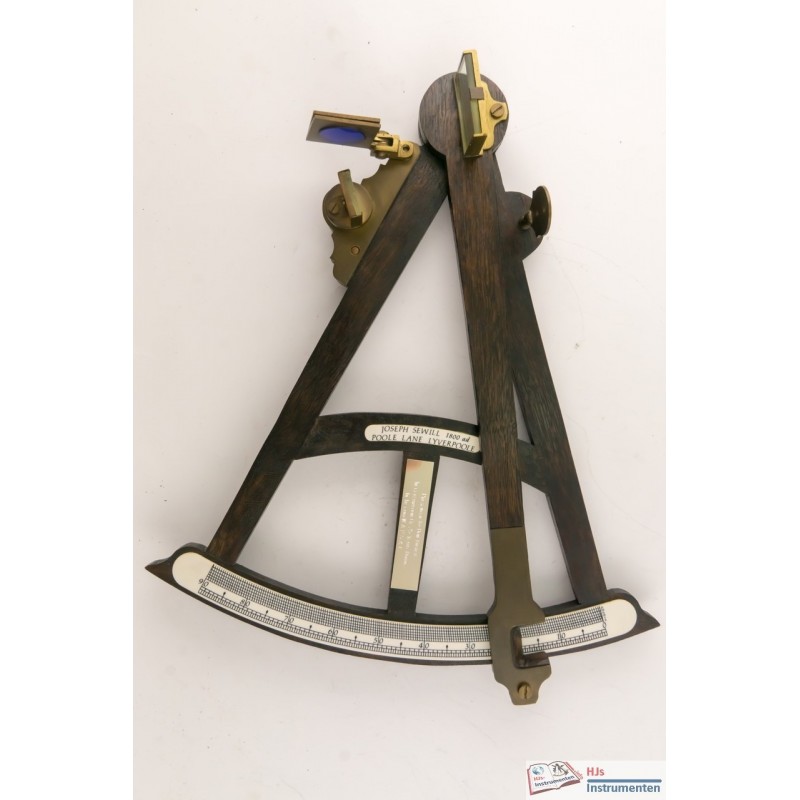










Replica octant in brass and wood
Obtained from the UK
I picked this item up at a UK auction for a small price. It was correctly labeled as a model but it still piqued my interest. For a model it is quite decent but upon close observation it definitely shows its recent heritage. That is, if you overlook its very good state (apart from some missing items).
The instrument made of wood but not of ebony. It is rather simple wood probably stained to give it a dark look (I did not test this). The ivory is simple plastic or ivorine but well engraved. The brass looks OK untill given a detailed inspection. Then one finds that the filters are mounted using a brass nut whereas the index mirror is only fastened with a single screw. Even worse, the filters are mounted upside down (and are blue, a not very customary colour) keeping them in the way of the line of sight when folded up . When folded down the filters do not cover the entire index mirror rendering them useless.
The maker is supposedly 'Joseph Sewill, Poole Lane, Liverpool'. The instrument is supposed to be made in 1800 ad. The instrument maker Joseph Sewill did exists and was indeed born in 1800 He held shop in Liverpool but not in Poole Lane which does not seem to exist (any more). The type of octant is incorrect for being made after the 1820s as it has a transversal scale (which was the part that attracted my interest in the first place).
The instrument was given as a memorial (with a rather cheaply engraved metal plate as found on sporting medals) to Don Tucker by the W.A.P.S.A.C. for 25 years of diving in Ireland. As far as I have found out, Don Tucker was an English specialist on historic wrecks which would explain this gift. Considering that he was diving in Ireland in 1967, the gift must have been from before 1992 making this an early replica. The W.A.P.S.C.A.C. is the Whiston and Prescot Sub Aqua Club and was founded in 1972.
More information
Data sheet
You might also like